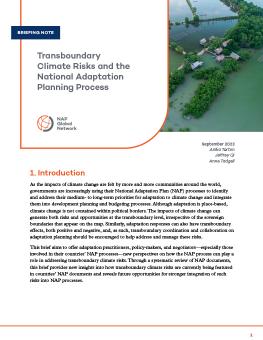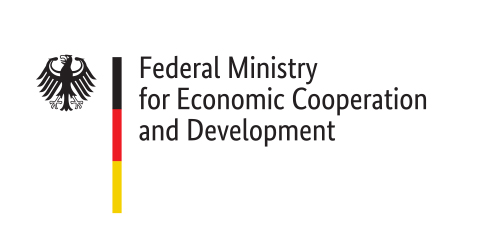
Transboundary Climate Risks and the National Adaptation Planning Process
The impacts of climate change can generate both risks and opportunities at the transboundary level, irrespective of the sovereign boundaries that appear on the map. This brief aims to offer adaptation practitioners, policy-makers, and negotiators new perspectives on how the NAP process can play a role in addressing transboundary climate risks.
As the impacts of climate change are felt by more and more communities around the world, governments are increasingly using their national adaptation plan (NAP) processes to identify and address their medium- to long-term priorities for adaptation to climate change and integrate them into development planning and budgeting processes.
Although adaptation is place-based, climate change is not contained within political borders. The impacts of climate change can generate both risks and opportunities at the transboundary level, irrespective of the sovereign boundaries that appear on the map. Similarly, adaptation responses can also have transboundary effects, both positive and negative, and, as such, transboundary coordination and collaboration on adaptation planning should be encouraged to help address and manage these risks.
This brief aims to offer adaptation practitioners, policy-makers, and negotiators—especially those involved in their countries' NAP processes—new perspectives on how the NAP process can play a role in addressing transboundary climate risks.
Participating experts
You might also be interested in
Year One of SUNCASA Progress: Lessons in Nature-Based Solutions
In its first year of implementation, the Scaling Urban Nature-based Solutions (NbS) for Climate Adaptation in Sub-Saharan Africa (SUNCASA) project has delivered significant results, laying the foundation for scaling up gender-equitable and socially inclusive climate adaptation efforts in 2025 and 2026 in Dire Dawa (Ethiopia), Kigali (Rwanda), and Johannesburg (South Africa).
“The howler monkeys are everywhere”: How women in Belize are harnessing the power of nature to conserve their community
This International Women’s Day, the president of the Community Baboon Sanctuary Women’s Conservation Group in Belize River Valley talks about the environmental challenges facing their community, the group’s proudest achievements as a women-run organization, and their aspirations for community-based conservation through nature-based solutions in Belize.
Funding the Future
Practical recommendations for federal infrastructure programs with 14 criteria to better enable natural infrastructure in Canada.
Advancing Gender-Responsive and Socially Inclusive Practices in Nature-Based Solutions for Adaptation
Get inspired by two nature-based solutions for climate adaptation projects that integrate gender equality and social inclusion considerations at various stages of implementation.
